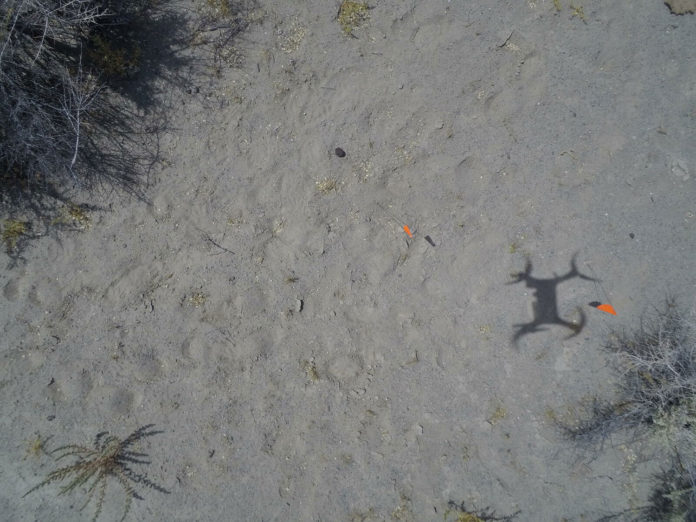Scientists estimate some 500 meteorites plummet to Earth every year, but less than 2% of them are ever recovered – usually the larger chunks. The smaller ones often go neglected. Determining the exact place where a meteorite fell is tricky and time-consuming.
Now, one team of researchers at the University of California is trying to speed up the process with autonomous drones. They have been trialing using machine learning techniques and an autonomous drone to find the smaller meteorites in impact sites that are either hidden or simply inaccessible.
To locate meteorites autonomously, the team led by planetary scientist Robert Citron first conducted a grid survey using autonomous quadcopter drones, acquiring top-down images of the strewn field – where a meteorite had recently fallen – from a low altitude. “Those images can be analyzed using a machine-learning classifier to identify meteorites in the field among many other features,” the study says of the system, which uses “different convolution neural networks to recognize meteorites from images taken by drones in the field.”
The new proof-of-concept meteorite classifier uses a mix of convolutional neural networks to recognize meteorites based on training images, both from online images as well as staged shots from the team’s collection. This helps artificial intelligence distinguish between space rocks and ordinary stones, even with a variety of shapes and terrain conditions.
The system was implemented in a conceptual drone set up and tested in the suspected strewn field of a recent meteorite fall near Walker Lake, Nevada. Despite some false positives – which are natural in tests – the test drone was able to correctly spot planted meteorites by the researchers in the region.
The biggest challenge in configuring the system, according to Citron, was to assemble a set of training data to guide machine learning. He explains that since a meteorite can land on any terrain, the drone needed an object detection algorithm trained with as many samples of real meteorites as possible.
If the technology proves accurate, it would help scientists spot and potentially recover meteorites that are either too small to find or too remote. This could help pinpoint meteorite sources and identify the rock’s compositions.
